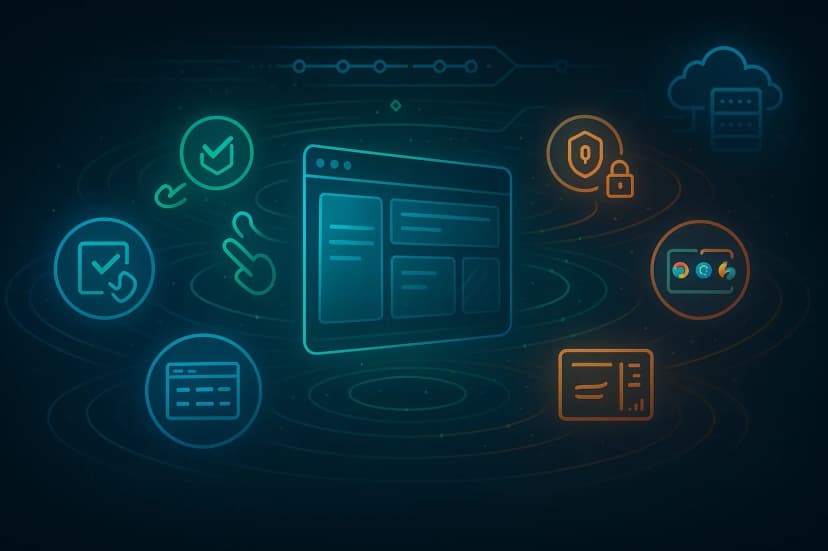In the fast-paced digital era, your website is often the first interaction customers have with your business. Imagine a potential client visiting your site only to find broken links, slow loading times, or security vulnerabilities. This is where web testing comes into play, acting as the guardian angel, ensuring your online presence is not just functional but stellar. Let’s dive into the world of web testing, exploring its importance, types, benefits, and future trends.
Introduction to Web Testing
Web testing is the process of evaluating websites and web applications for functionality, usability, security, performance, and compatibility. It involves a series of activities designed to ensure that a web application works correctly and meets the specified requirements before going live. Think of it as a comprehensive health check-up for your website, ensuring every aspect functions flawlessly.
The Importance of Web Testing for Business Success
Why is web testing so crucial? In the digital landscape, your website is more than just a business card—it’s a critical asset that can make or break your brand’s reputation. Here’s why web testing is indispensable:
- User Experience: A well-tested website provides a seamless user experience, which is vital for retaining visitors and converting them into customers.
- Security: Regular testing helps identify vulnerabilities, protecting your site from cyber-attacks and data breaches.
- Performance: Ensuring your site loads quickly and handles traffic efficiently can significantly impact user satisfaction and search engine rankings.
- Functionality: Testing verifies that all features work as intended, preventing frustrating user experiences caused by broken links or malfunctioning forms.
Different Types of Web Testing
Web testing encompasses various testing types, each focusing on different aspects of the web application. Here are some key types:
- Functionality Testing: This checks whether all features of the website are working as expected. For example, verifying form submissions, links, cookies, and database connections.
- Usability Testing: This assesses the user-friendliness of the site. It involves evaluating the navigation, design, and overall user experience.
- Security Testing: Given the increasing threat of cyber-attacks, security testing is critical. It identifies vulnerabilities and ensures that data protection mechanisms are robust.
- Performance Testing: This tests the website’s performance under various conditions, including load testing (handling multiple users simultaneously) and stress testing (behaviour under extreme conditions).
- Compatibility Testing: This ensures the website works across different browsers, devices, and operating systems.
For comprehensive web testing services, check out our Web Application Testing Services.
Benefits of Thorough Web Testing
Investing in thorough web testing offers numerous benefits:
- Improved User Experience: A glitch-free, intuitive website enhances user satisfaction and engagement.
- Enhanced Security: Regular testing uncovers vulnerabilities, allowing you to address them before they can be exploited.
- Higher Performance: Ensuring your site performs well under various conditions can boost your SEO rankings and user retention.
- Cost Efficiency: Identifying and fixing issues early in the development process saves time and money in the long run.
- Reputation Management: A well-tested, reliable website builds trust with your audience and enhances your brand’s reputation.
Real-World Examples of Effective Web Testing Strategies
Consider e-commerce giants like Amazon. Their rigorous web testing strategies ensure their site can handle massive traffic spikes during sales events without a hitch. Or take banking websites that prioritise security testing to protect sensitive customer information.
Future Trends in Web Testing
As technology evolves, so do web testing practices. Here are some future trends to watch:
- AI and Machine Learning: AI-driven testing tools can predict potential issues and automate complex testing processes, enhancing efficiency and accuracy.
- Test Automation: Increasing reliance on automated testing tools reduces manual efforts and accelerates the testing cycle. For instance, our Automation Testing Services offer advanced solutions for streamlined testing.
- Continuous Testing: Integrated into the CI/CD pipeline, continuous testing ensures that testing happens at every stage of development, leading to quicker releases and higher quality.
- Enhanced Security Measures: With rising cyber threats, future web testing will place even greater emphasis on advanced security testing techniques.
How Businesses Can Implement Comprehensive Web Testing Practices
Implementing effective web testing practices involves several key steps:
- Develop a Testing Strategy: Outline your testing objectives, scope, resources, and timelines.
- Select the Right Tools: Choose tools that align with your testing requirements, whether for functionality, performance, or security.
- Automate Where Possible: Leverage automation to handle repetitive tasks, increasing efficiency and coverage.
- Regular Audits and Updates: Continuously monitor and update your testing practices to adapt to new challenges and technologies.
- Professional Expertise: Partner with experts who specialise in comprehensive testing services. Our team at Testriq is equipped to help you implement robust testing practices tailored to your needs.
Conclusion
In the dynamic world of digital business, ensuring your website functions flawlessly is paramount. Web testing is the key to achieving this, safeguarding your site’s performance, security, and user experience. By understanding its importance, types, benefits, and future trends, and by implementing comprehensive testing practices, you can keep your digital presence robust and reliable.
For more detailed information or to get started with professional web testing services, visit Testriq and don’t hesitate to contact us for customized solutions.
About Nandini Yadav
Expert in Web App Testing with years of experience in software testing and quality assurance.
Found this article helpful?
Share it with your team!
